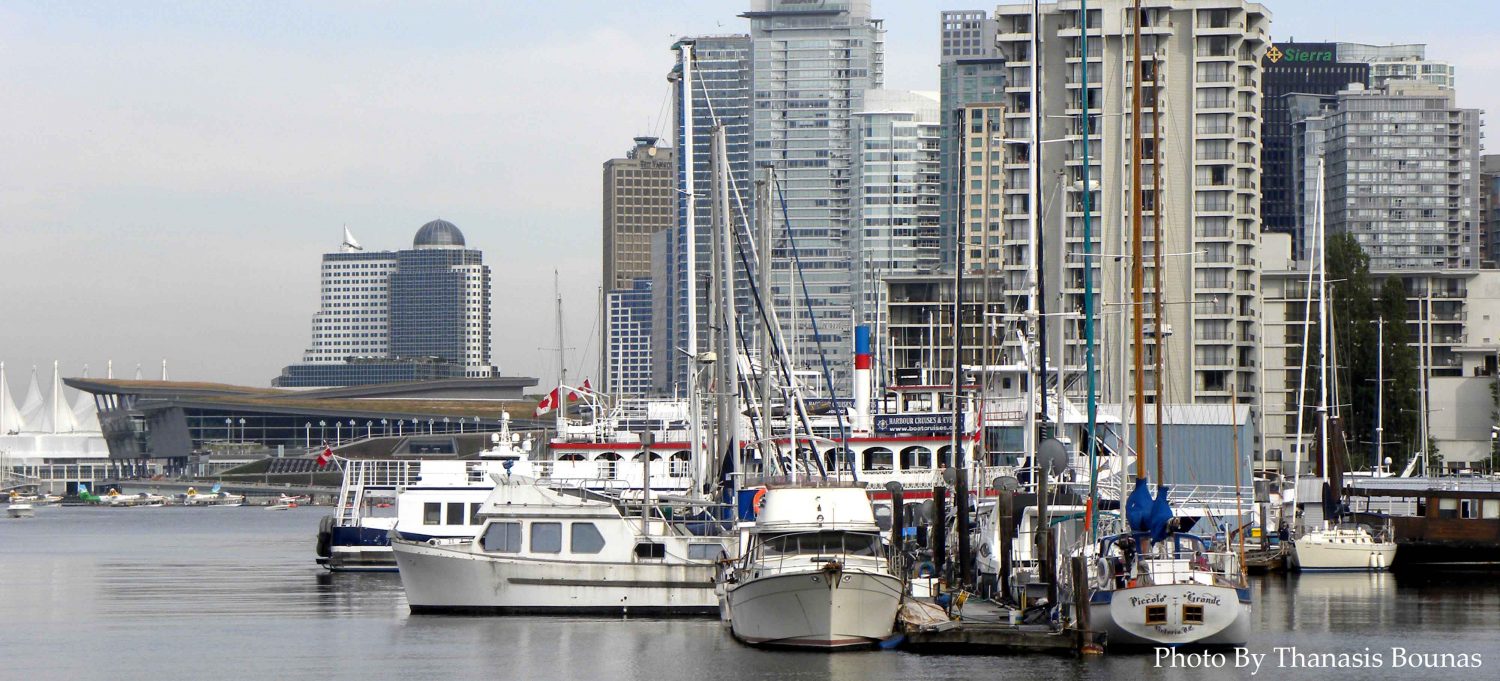
From Mudflats to Marketplace
At the heart of Vancouver, British Columbia, Canada, beneath the shadow of the Granville Street Bridge, lies Granville Island — a vibrant hub of art, food, and community.
What is now one of the city’s most beloved cultural landmarks began as a muddy industrial sandbar in False Creek.
The island’s transformation from gritty dockland to creative paradise is one of Vancouver’s most remarkable urban success stories.
The Birth of an Industrial Island
In the early 1900s, False Creek was a working harbor filled with mills, shipyards, and warehouses.
The idea of creating an artificial island emerged from the city’s growing demand for industrial space.
By 1916, land reclamation projects using dredged sand and rock had formed what became known as Industrial Island — later renamed Granville Island after the nearby bridge.
It soon housed factories that produced steel, cement, and machinery, fueling Vancouver’s early 20th-century expansion.
The Grit of Industry
Throughout the 1920s and 1930s, Granville Island was a hive of industrial activity.
Smokestacks, cranes, and wooden piers dominated the landscape, while workers built ships and processed materials that supported the city’s infrastructure.
Although the island played a vital economic role, it was far from picturesque — loud, dusty, and often polluted.
Few could have imagined that this industrial heartland would one day become a center for art and culture.
Decline and Neglect
By the 1950s, heavy industry on Granville Island began to fade.
Factories closed, and the site fell into disrepair, becoming a shadow of its former productivity.
False Creek itself had grown stagnant from decades of industrial runoff, and the area was largely abandoned by the 1960s.
The once-thriving island seemed destined to disappear into the city’s forgotten corners.
A Vision for Renewal
In the 1970s, a bold idea emerged: to transform the decaying industrial site into a public marketplace and cultural district.
Led by the Government of Canada and the Canada Mortgage and Housing Corporation (CMHC), urban planners envisioned a space that preserved the island’s heritage while opening it to artists, craftspeople, and local businesses.
Instead of demolishing old buildings, they repurposed them — giving a second life to the steel beams and wooden warehouses that defined the island’s character.
The Birth of the Public Market
The Granville Island Public Market, opened in 1979, became the centerpiece of the island’s rebirth.
With fresh produce, seafood, baked goods, and artisan crafts, it captured the essence of Vancouver’s west coast lifestyle.
The market quickly became a gathering place for locals and visitors alike, symbolizing community, creativity, and sustainability.
It was the heart of a revitalized district that balanced commerce with culture.
Arts, Theatre, and Innovation
Alongside the market came theatres, studios, and galleries that turned Granville Island into a cultural landmark.
The Arts Club Theatre, Emily Carr University of Art + Design, and numerous artist collectives brought new energy to the former industrial sheds.
Street performers, musicians, and sculptors filled the public spaces, creating an atmosphere that celebrated imagination and diversity.
Granville Island became the living expression of Vancouver’s creative spirit.
A Model of Urban Transformation
Today, Granville Island in British Columbia, Canada, stands as a model for urban regeneration worldwide.
Its careful blend of heritage preservation, public space, and local enterprise demonstrates how cities can evolve without erasing their past.
The island remains under federal ownership but thrives through community involvement and small-scale entrepreneurship.
It is both a cultural stage and a neighborhood — a place where the industrial and the artistic coexist in perfect balance.
In Reflection
The history of Granville Island in British Columbia, Canada, is a story of reinvention and resilience.
From mudflats to marketplace, from factory floor to artist’s studio, it mirrors Vancouver’s evolution from an industrial port to a world-class coastal city.
Every cobblestone, crane, and café tells part of that transformation.
Granville Island remains what it has always been — a place built by hands, heart, and the enduring imagination of the people of British Columbia.









Be the first to comment